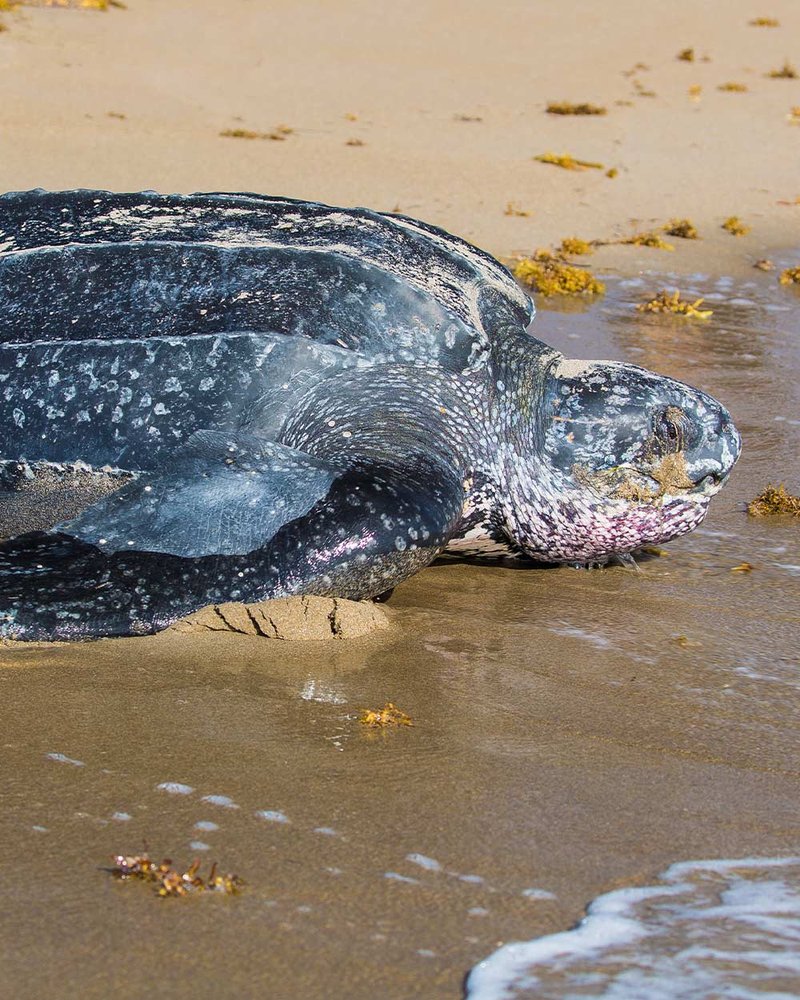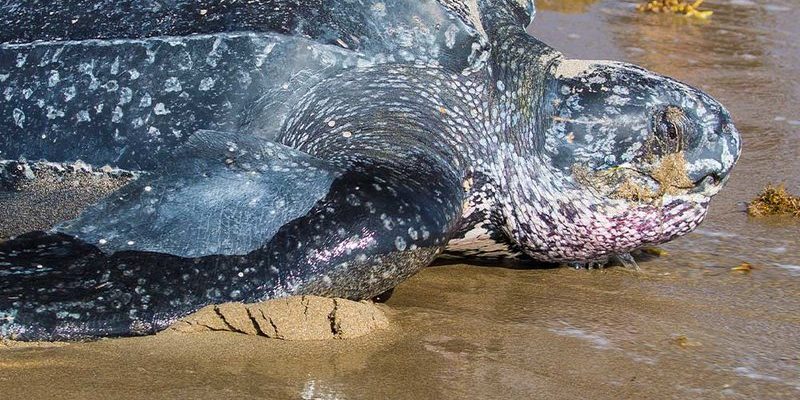
You might be wondering, “What exactly is putting these incredible turtles at risk?” It’s a mixture of human activity and natural changes in their environment. Just like how a storm can change your plans for the day, the leatherback turtle’s world is being affected by various factors. Let’s dive into some of the most common threats these turtles face and why it matters for them—and for us.
1. Habitat Loss
Habitat loss is a major concern for leatherback turtles. These turtles need specific nesting sites on coastal beaches to lay their eggs. Unfortunately, many of these beaches are being developed for tourism, housing, and industry. It’s like having your favorite playground taken away! If leatherbacks can’t find suitable places to nest, their populations will continue to dwindle.
The challenges don’t stop there. Coastal development often leads to increased pollution and human presence, which can disrupt the nesting process. When female turtles return to shore to lay their eggs, they might find that their chosen spot is blocked or unsafe. This interference can lead to a decrease in successful hatchlings, impacting the overall population of leatherbacks in the wild.
2. Climate Change
Here’s the thing: climate change is affecting every corner of our planet, including the habitats of leatherback turtles. Rising sea levels can inundate nesting beaches, making them unsuitable for turtles to lay their eggs. Picture a beach that used to be perfect for nesting suddenly swallowed by the ocean. It’s a scary image, but it’s the reality these turtles face.
Additionally, changes in ocean temperatures can affect the availability of jellyfish, which are the primary food source for leatherbacks. If the jellyfish population declines or migrates to different areas because of warming waters, it could spell disaster for these turtles. They might struggle to find enough food, leading to malnutrition or even starvation.
3. Fishing Gear Entanglement
Imagine trying to swim freely in the ocean but getting tangled in a net—that’s what many leatherback turtles experience due to fishing gear. They often get caught in nets, lines, or traps, which can lead to injury or drowning. This is particularly true for turtles that roam in areas where fishing is prevalent.
To put this into perspective, a trapped turtle may struggle to surface for air, leading to suffocation. This is a haunting thought, especially since their natural instinct is to swim and breathe. By ensuring that fishing practices are more turtle-friendly—like using turtle exclusion devices—fishermen can help reduce the risk of entanglement and protect these incredible creatures.
4. Marine Pollution
Marine pollution is another significant threat to leatherback turtles. Plastic debris in the ocean can look a lot like jellyfish, which can confuse these turtles. When they mistakenly eat plastic, it can cause serious health issues or even death. It’s like mistaking a rubber band for a delicious snack—only much more dangerous.
Moreover, pollution can lead to toxic substances entering the ocean, which can be harmful to turtles. Heavy metals and chemicals can accumulate in their bodies, affecting their reproductive capabilities and leading to health decline. By reducing our use of plastics and other harmful materials, we can help create a safer environment for leatherback turtles and countless other marine species.
5. Climate-Driven Changes in Prey Availability
As mentioned earlier, leatherback turtles primarily feast on jellyfish. However, climate change can disrupt this food chain as well. Changes in ocean currents and temperatures can shift jellyfish populations, leaving turtles without access to their main source of food. Imagine going to your favorite restaurant only to find it closed for good—that’s akin to what these turtles face when the jellyfish vanish.
Furthermore, if jellyfish populations decline, it can create an imbalance in the ocean ecosystem. This could lead to more jellyfish blooms, which may seem paradoxical at first, but it’s all interconnected. Turtles, along with other marine life, depend on a healthy ocean ecosystem to thrive. Ensuring a stable climate and habitat is crucial for maintaining this delicate balance.
6. Illegal Harvesting
Unfortunately, illegal harvesting remains a grave threat to leatherback turtles. Some cultures have traditions of hunting these turtles for their meat, eggs, and shells. It’s a sad reality, as their populations are already declining, and adding illegal hunting to the mix makes things even worse.
The leatherback turtle is listed as vulnerable, and in some regions, they are critically endangered. With each turtle taken from the wild, the risk of extinction increases. Efforts to enforce laws against poaching and to educate communities about the importance of conserving these turtles are essential for their survival.
7. Light Pollution
Light pollution isn’t something most of us think about, but it can cause confusion for leatherback turtles. When hatchlings emerge from their eggs, they instinctively head towards the brightest light, usually the moon reflecting off the ocean. But when artificial lights from buildings and streetlights are too bright, they can lead hatchlings in the wrong direction—away from the ocean and towards danger.
This misdirection can significantly reduce the number of hatchlings that make it to the water. To combat this, communities located near nesting sites can take steps to minimize artificial lighting during nesting season. By creating a safer environment for these hatchlings, we take a small yet significant step toward helping leatherback turtles survive.
8. Conservation Efforts and Their Importance
It’s not all doom and gloom. Thankfully, many organizations and individuals are working tirelessly to protect leatherback turtles and their habitats. Conservation programs focus on creating safe nesting sites, reducing bycatch in fishing, and working with communities to minimize light pollution.
You might be wondering, “How can I help?” There are plenty of ways to contribute, like supporting marine conservation organizations or volunteering for beach clean-ups. Every action counts! When we come together to protect these incredible creatures, we’re not just helping leatherbacks—we’re also preserving the health of our ocean ecosystems for generations to come.
In conclusion, the leatherback turtle faces a myriad of threats in the wild that pose serious risks to their survival. From habitat loss and climate change to fishing gear entanglement and pollution, these challenges can seem overwhelming. However, by understanding these threats and engaging in conservation efforts, we can support the future of this remarkable species. The journey isn’t easy, but every effort counts, and it starts with awareness and action. Together, we can help ensure that future generations get to marvel at these magnificent turtles gliding through our oceans.

